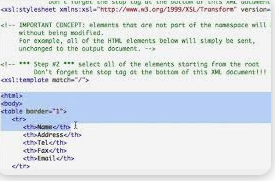Forex signals play a pivotal role in the trading strategies of both novice and experienced traders. These signals provide timely insights and actionable recommendations on potential trading opportunities within the forex market. By leveraging technical analysis, market trends, and economic news, forex signals help traders make informed decisions about when to buy or sell currency pairs. Understanding and utilizing forex signals can significantly enhance trading efficiency and profitability, making them an indispensable tool in the world of forex trading.
1. What are Forex signals?
Forex signals are crucial tools that help traders navigate the complexities of the forex market. They are essentially alerts or recommendations indicating the best times to enter or exit trades. These signals can be derived from multiple sources, such as technical analysis, which involves examining historical price charts and market trends, or fundamental analysis, which considers economic indicators and news events that may impact currency prices.
Forex signals are typically disseminated through various channels, including email, SMS, and trading platforms, ensuring that traders receive timely information. The primary goal of these signals is to enhance trading decisions, reduce risks, and improve the likelihood of successful trades. By following forex signals, traders can align their strategies with market conditions, thereby optimizing their trading performance.
There are several types of forex signals, including:
- Manual signals: Generated by experienced traders or analysts who manually review market conditions and provide trading advice.
- Automated signals: Created by computer algorithms that analyze market data and generate signals based on predefined criteria.
Using forex signals effectively requires understanding the underlying methodology and choosing reliable signal providers. It is important to verify the historical performance of signals and ensure they align with one’s trading strategy and risk tolerance.
By incorporating forex signals into their trading routine, traders can stay ahead of market trends, make more informed decisions, and ultimately, enhance their trading outcomes.
2. How do Forex signal systems work?
Forex signal systems function through a combination of technical analysis, market trends, and other financial indicators to generate trading signals that suggest whether to buy or sell a currency pair at a specific time. These systems can be categorized into manual and automated signal systems.
Manual signal systems rely on human analysts who use their expertise and market experience to evaluate trading opportunities. They analyze market data, news events, and technical indicators to create signals. These signals are then communicated to traders via various platforms such as email, SMS, or trading apps.
Automated signal systems use complex algorithms and software programs to continuously scan the forex market. These systems apply predefined criteria to market data, generating signals based on patterns, trends, and technical indicators like moving averages, stochastic oscillators, and chart patterns such as head-and-shoulders or flags. Automated systems can quickly process large amounts of data and provide real-time signals, which can be executed automatically on trading platforms like MetaTrader.
The key to utilizing forex signal systems effectively lies in understanding their underlying methodologies and ensuring that they align with one’s trading strategy and risk management practices. Regular testing and adjustments are necessary to maintain the accuracy and relevance of the signals.
3. What are the different types of Forex signals?
Forex signals can be broadly classified into several types, each serving different trading needs and strategies:
Manual Signals: These signals are generated by experienced traders who analyze market conditions and create trading recommendations based on their expertise. Manual signals benefit from human judgment and can consider unexpected events that algorithms might miss, such as geopolitical developments or sudden market shifts.
Automated Signals: These signals are produced by computer algorithms that analyze vast amounts of market data to identify trading opportunities. Automated signals can be advantageous due to their speed and ability to operate 24/5, covering multiple time zones and markets. They remove the emotional element from trading, which can often lead to more consistent results.
Copy Trading Signals: A subset of automated signals, copy trading allows traders to replicate the trades of experienced investors. This method automates the signal following process, ensuring that traders do not miss any trading opportunities identified by the copied trader. While this can be highly efficient, it also carries the risk of copying poor trading decisions if the chosen trader performs poorly.
Technical Analysis Signals: These signals are based on technical indicators such as moving averages, Bollinger Bands, RSI (Relative Strength Index), and MACD (Moving Average Convergence Divergence). Technical analysis signals help traders identify entry and exit points based on historical price patterns and statistical measures.
Fundamental Analysis Signals: These signals derive from fundamental data, such as economic indicators, central bank announcements, and geopolitical events. They help traders make decisions based on the broader economic context rather than just price movements.
Each type of forex signal has its advantages and limitations, and traders often use a combination of these signals to enhance their trading strategies and make more informed decisions.
4. How can Forex signals enhance trading strategies?
Forex signals can significantly enhance trading strategies by providing timely, data-driven insights that guide traders on optimal entry and exit points. Here are a few ways they contribute to improving trading strategies:
Time-Saving: One of the primary benefits of using Forex signals is the considerable amount of time they save traders. Instead of spending hours analyzing market charts and monitoring price movements, traders can rely on signals to receive timely alerts about potential trading opportunities. This allows traders to focus on other crucial aspects of their strategy, such as risk management and trade execution.
Risk Management: Forex signals often come with predefined stop-loss and take-profit levels, which are crucial for managing risk effectively. These parameters help traders protect their capital by limiting potential losses and securing profits at predetermined levels. By adhering to these levels, traders can maintain a disciplined approach to risk management, which is vital for long-term success.
Educational Value: For beginners, Forex signals can serve an educational purpose. By following the signals and observing the outcomes, novice traders can learn about market analysis, risk management, and the decision-making process involved in trading. This hands-on learning approach helps build confidence and enhances their understanding of trading strategies over time.
5. What are the best platforms for Forex signals in 2024?
Choosing the right platform for Forex signals is critical to optimizing trading performance. Here are some of the top platforms for 2024:
Forex.com: Known for its comprehensive trading tools and robust platform, Forex.com offers a wide range of analytical tools, including access to SMART Signals. These signals are generated through an automated algorithm that monitors multiple currency pairs, providing traders with valuable insights based on historical data and price patterns.
Learn2Trade: This platform is popular for both its free and premium Forex signal services. It offers real-time signals through a Telegram group, providing traders with detailed information on entry and exit points, stop-loss, and take-profit levels. Learn2Trade also offers a trading bot, L2T Algo, which automates trading based on these signals.
TIOmarkets: This platform provides Forex signals that are beneficial for both beginners and experienced traders. It emphasizes risk management by including stop-loss and take-profit levels with its signals. TIOmarkets also offers additional resources and customer support to help traders make the most of their signals.
1000pip Builder: Known for its high-quality signals, 1000pip Builder offers signals through various channels, including Telegram, email, and SMS. The platform prides itself on transparency, with trading results that can be independently verified via MyFXBook. It focuses on providing signals for a wide range of currency pairs, making it suitable for traders with diverse portfolios.
6. How to choose the right Forex signal provider?
Selecting the right Forex signal provider is essential for maximizing the benefits of trading signals. Here are some key factors to consider:
Reputation and Track Record: Research the provider’s reputation within the trading community. Look for reviews, testimonials, and independent verification of their trading results. A provider with a proven track record of success is more likely to offer reliable and accurate signals.
Cost vs. Benefit: Evaluate the cost of subscribing to the signal service against the potential benefits. While some providers offer free signals, others charge a subscription fee. Ensure that the potential profits from the signals justify the cost. Consider starting with a provider that offers a trial period or a money-back guarantee to test the service before committing fully.
Support and Resources: A good signal provider should offer more than just trading signals. Look for providers that also offer educational resources, customer support, and additional tools to help you understand and use their signals effectively. Comprehensive support can enhance your trading experience and provide valuable learning opportunities.
By carefully considering these factors, traders can choose a Forex signal provider that aligns with their trading strategy and goals, enhancing their chances of success in the Forex market.
7. What are the pros and cons of manual vs. automated Forex signals?
Automated Forex Signals
Pros:
- Efficiency and Speed: Automated systems can analyze vast amounts of data and execute trades in real-time, capitalizing on market opportunities instantly without human delay. This is particularly beneficial for high-frequency trading and 24/7 market monitoring.
- Emotion-Free Trading: Automated trading removes emotional biases such as fear and greed from the decision-making process, ensuring a disciplined execution of trading strategies.
- Backtesting and Optimization: Automated systems allow for extensive backtesting of trading strategies on historical data, enabling traders to refine and enhance their algorithms for improved performance
.
Cons:
- Dependence on Technical Analysis: Automated systems primarily rely on technical analysis and may overlook fundamental factors influencing market movements, potentially leading to false signals.
- Complexity and Technical Issues: Implementing and maintaining automated systems can be complex, and they are susceptible to technical glitches or system failures that could result in financial losses.
- Over-Optimization Risk: There’s a risk of over-optimizing strategies based on historical data, which may not perform well in live market conditions due to changing dynamics.
Manual Forex Signals
Pros:
- Flexibility and Adaptability: Manual trading allows traders to adapt quickly to changing market conditions, leveraging their experience and intuition to capitalize on emerging opportunities.
- Holistic Market Analysis: Human traders can incorporate both technical and fundamental analysis into their decision-making process, providing a comprehensive understanding of market dynamics.
- Educational Component: Manual signals often come with detailed analysis and explanations, helping traders learn from the rationale behind each recommendation and improve their trading skills over time.
Cons:
- Time-Consuming: Manual trading requires significant time and attention to monitor the market closely and make timely decisions, which can be challenging for traders with busy schedules.
- Emotional Influence: Emotions like fear and greed can influence manual trading decisions, leading to impulsive or irrational behavior and increased susceptibility to market noise and fluctuations.
8. How do technical indicators influence Forex signals?
Technical indicators play a crucial role in generating Forex signals by analyzing historical price data and identifying patterns that can predict future market movements. Here are some ways technical indicators influence Forex signals:
Trend Indicators: Indicators such as moving averages (MA) and the Moving Average Convergence Divergence (MACD) help traders identify the direction and strength of a trend. For example, a signal to buy might be generated when a short-term moving average crosses above a long-term moving average, indicating a potential uptrend.
Momentum Indicators: Tools like the Relative Strength Index (RSI) and Stochastic Oscillator measure the speed and change of price movements. These indicators can signal potential reversals or continuation of trends. For instance, an RSI above 70 may indicate an overbought condition, suggesting a sell signal, while an RSI below 30 may indicate an oversold condition, suggesting a buy signal.
Volatility Indicators: Indicators such as Bollinger Bands and the Average True Range (ATR) measure market volatility. Bollinger Bands, for example, can signal overbought or oversold conditions when prices touch or move beyond the bands, prompting buy or sell signals.
Volume Indicators: Volume indicators like the On-Balance Volume (OBV) and Chaikin Money Flow (CMF) help confirm the strength of a price movement by analyzing trading volume. A surge in volume might confirm the validity of a breakout signal generated by other indicators.
By combining these indicators, traders can generate more reliable Forex signals that consider multiple aspects of market behavior, enhancing the accuracy and effectiveness of their trading strategies.
9. How does market news impact Forex signals?
Market news significantly impacts Forex signals as it provides fundamental data that can cause substantial price movements. Here are ways market news influences Forex signals:
Economic Indicators: News related to economic indicators such as GDP growth, employment figures, inflation rates, and central bank interest rate decisions can cause immediate and significant fluctuations in currency values. Forex signals often incorporate these economic releases to predict potential market movements and generate timely trading recommendations.
Geopolitical Events: Political developments, elections, trade agreements, and geopolitical tensions can impact market sentiment and currency valuations. For instance, news of a trade deal between major economies might trigger buy signals for their currencies, while geopolitical tensions might trigger sell signals due to increased risk aversion.
Market Sentiment: News that influences market sentiment, such as corporate earnings, commodity prices, and financial market performance, can also impact Forex signals. Positive sentiment can lead to bullish signals, while negative sentiment can lead to bearish signals.
Forex signal providers often analyze and interpret market news to adjust their recommendations, ensuring that their signals reflect the latest market conditions and potential future developments. This responsiveness to market news helps traders make informed decisions and capitalize on news-driven market opportunities.
10. What are the common tools used in Forex signal systems?
Forex signal systems utilize a variety of tools to generate trading signals that help traders make informed decisions. Here are some of the most commonly used tools:
Technical Indicators: These are mathematical calculations based on historical price, volume, or open interest data. Commonly used technical indicators include Moving Averages (MA), Relative Strength Index (RSI), Bollinger Bands, Moving Average Convergence Divergence (MACD), Stochastic Oscillator, and Fibonacci Retracement levels. These indicators help traders identify trends, measure market momentum, and determine potential entry and exit points for trades.
Chart Patterns: Traders use chart patterns like head-and-shoulders, double tops and bottoms, flags, and pennants to predict future price movements. These patterns are visual representations of price movements that help in identifying market trends and potential reversals.
Automated Trading Systems (Forex Robots): These are computer programs that use algorithms to analyze market data and generate trading signals. Automated systems can execute trades based on predefined criteria, offering speed and efficiency in trading. They can operate 24/7, making them ideal for traders who cannot monitor the market continuously.
Economic Calendars: An economic calendar lists upcoming economic events and releases, such as GDP reports, employment data, and central bank meetings. These events can significantly impact currency prices, and traders use this information to anticipate market movements and adjust their trading strategies accordingly.
By combining these tools, Forex signal systems can provide comprehensive and reliable trading signals that help traders optimize their trading strategies.
11. How reliable are Forex signals for beginners?
Forex signals can be quite beneficial for beginners, but their reliability depends on several factors:
Learning Opportunity: Forex signals offer a valuable educational resource for beginners. By following signals from experienced traders or automated systems, novices can learn about market analysis, trading strategies, and risk management. This hands-on learning can help build their confidence and understanding of the Forex market.
Objective Decision Making: One of the main advantages of using Forex signals is the removal of emotional biases from trading decisions. Signals provide data-driven recommendations, helping beginners make more rational and objective trades. This can be particularly useful for those who may be prone to making impulsive decisions based on emotions like fear or greed.
Risk of Over-Reliance: While Forex signals can be helpful, beginners should avoid becoming too reliant on them. It’s essential to use signals as a supplement to their own analysis and understanding of the market. Over-reliance on signals without developing personal trading skills and knowledge can limit a trader’s ability to adapt to changing market conditions.
Overall, Forex signals can be a reliable tool for beginners when used correctly. They provide valuable insights and education, but should be used in conjunction with personal market analysis and continuous learning.
12. What are the costs associated with Forex signal services?
The costs of Forex signal services can vary widely depending on several factors:
Free vs. Paid Signals: Some providers offer free Forex signals, which are often more basic and may come with less comprehensive analysis. Paid signal services, on the other hand, typically offer more detailed and sophisticated signals. These can include in-depth market analysis, higher accuracy, and additional features such as customer support and educational resources.
Subscription Fees: Paid Forex signal services usually charge a subscription fee. This can be a monthly, quarterly, or annual fee, and it often ranges from $30 to $200 per month depending on the provider and the level of service offered. Some premium services might charge even higher fees, especially if they provide personalized trading advice or access to exclusive tools and resources.
One-Time Fees: Some providers might charge a one-time fee for access to their signals or trading systems. This can be an alternative to ongoing subscription fees and might appeal to traders who prefer a single upfront cost.
Additional Costs: Besides the direct costs of the signals, traders should also consider any additional costs such as data feeds, software subscriptions, and any potential transaction costs associated with executing the trades based on the signals.
When choosing a Forex signal service, it’s crucial to weigh the costs against the potential benefits and to ensure that the service fits within your trading budget and goals.
Conclusion
Forex signals are invaluable tools that can significantly enhance trading strategies by providing timely and data-driven insights. They help traders navigate the complexities of the Forex market, offering guidance on optimal entry and exit points. By leveraging technical indicators, market news, and automated systems, Forex signals can save traders time, reduce emotional biases, and provide educational value for beginners.
Both manual and automated Forex signals have their distinct advantages and drawbacks. Automated systems offer speed and efficiency, operating 24/7 without emotional interference. However, they may lack the adaptability and holistic market analysis that manual signals provide. Manual signals, generated by experienced traders, incorporate both technical and fundamental analysis, offering a more flexible and educational approach but requiring significant time and attention.
Common tools used in Forex signal systems include technical indicators like Moving Averages, RSI, and MACD, chart patterns, and automated trading systems. These tools help in generating reliable signals by analyzing historical data and current market conditions. While Forex signals can be particularly beneficial for beginners by offering learning opportunities and objective decision-making, it’s crucial to avoid over-reliance on them and continue personal market analysis and learning.
The costs associated with Forex signal services vary, with options ranging from free to subscription-based and one-time fees. Paid services often provide more comprehensive analysis and additional features, justifying their cost for many traders.
In conclusion, Forex signals are powerful assets in a trader’s toolkit, capable of enhancing trading efficiency, accuracy, and education. However, successful trading also requires a balanced approach, combining the use of signals with continuous learning and personal market analysis to adapt to ever-changing market conditions. By choosing the right signal provider and integrating signals into a broader trading strategy, traders can maximize their chances of success in the dynamic Forex market.
LinkedIn Description
🚀 Elevate your Forex trading game with our comprehensive guide on Forex signals! Whether you’re a seasoned trader or a beginner, our latest blog post breaks down the essentials of Forex signals, from their types and benefits to the tools and strategies you need to succeed. Discover how to integrate these powerful signals into your trading strategy for improved accuracy and profitability. 📈💼 #ForexTrading #ForexSignals #TradingStrategy #FinancialFreedom #InvestSmart
Facebook Description
📊 Ready to take your Forex trading to the next level? Dive into our latest blog post on Forex signals! Learn about the different types of signals, the pros and cons of manual vs. automated signals, and the tools that can help you make informed trading decisions. Whether you’re new to trading or looking to refine your strategy, this guide has something for everyone. Start your journey towards smarter trading today! 💰🌍 #ForexSignals #ForexTrading #Investing #FinancialGrowth #TradingTips
Instagram Description
📈 Unlock the secrets of successful Forex trading with our latest blog post on Forex signals! From understanding the basics to exploring advanced tools and strategies, we’ve got you covered. Perfect for beginners and seasoned traders alike, this guide will help you make informed decisions and boost your trading game. Swipe up to read more! 🌟💼 #ForexTrading #ForexSignals #Investing #TradingTips #FinancialFreedom #SmartInvesting












